
Master the Bagpipes: Your Essential Beginner’s Guide
Step into a world where the haunting melodies of ancient times meet the vibrant pulse of musical expression. Welcome to the enchanting realm of bagpipes, where tradition intertwines with artistry to create an experience like no other. As you embark on your journey to master this distinctive instrument, prepare to be captivated by its rich history and profound cultural significance that echoes through centuries.
The bagpipe’s allure lies not only in its melodic tunes but also in the stories woven within each haunting note. Explore the depths of a musical legacy that has resonated across diverse lands and generations, shaping traditions and evoking emotions with every breath drawn into the chanter. Uncover the intricate tapestry of heritage as you delve into the roots of this iconic instrument, discovering a world alive with passion, pride, and timeless melodies waiting to be mastered. Join us on a quest to unlock the secrets of the bagpipes’ past and embrace a future brimming with possibilities as you seek to harmonize your soul with this extraordinary musical companion.
Getting Started with Bagpipes
The bagpipe is not just an instrument; it’s a complex and fascinating combination of components that work together to produce its unique sound. When delving into the world of bagpipes, it’s essential to understand its main parts: the chanter, drone pipes, blowstick, and bag. The chanter is where the melody is played, while the drone pipes create a constant background tone. The blowstick serves as the mouthpiece through which the player blows air into the bag, which is inflated to provide continuous airflow into the chanter and drones. Understanding how these elements work in harmony is crucial for any aspiring bagpiper.
As you embark on your bagpipe journey, you’ll encounter various types of bagpipes, each distinct in its design and sound. The Great Highland Bagpipes are perhaps the most well-known type globally, often associated with Scottish culture and traditional music. On the other hand, Scottish Smallpipes offer a softer and gentler tone suitable for more intimate settings. Exploring different types of bagpipes can help you find the one that resonates most with your musical preferences and aspirations.
One exquisite example of understanding these components comes from observing expert players meticulously tune their drones before a performance. The precision required to ensure each drone produces the perfect harmonic resonance with the chanter showcases both skill and dedication in mastering this intricate instrument. Each part plays a crucial role in creating the mesmerizing melodies that have captivated audiences for centuries across various cultures. By comprehending these components and exploring different types of bagpipes, you lay a solid foundation for your bagpiping endeavors.
Choosing Your First Bagpipe
When venturing into the world of bagpipes, one of the most crucial decisions you’ll make is selecting your first set of pipes. The factors to consider may seem daunting but fear not—your journey begins with finding a bagpipe that resonates with your musical aspirations. Start by contemplating the material from which the bagpipes are crafted. For example, African Blackwood is a popular choice due to its tonal quality and durability. Alternatively, polyphenol sets offer affordability without compromising on sound quality—an ideal option for those conscious of budget constraints.
Beyond material, size plays a pivotal role in your decision-making process. Great Highland Bagpipes are renowned for their majestic sound and versatility, making them a popular choice amongst beginners seeking a traditional experience. On the other hand, Scottish Smallpipes provide a mellower tone and are physically lighter—ideal for those prioritizing comfort during practice sessions or performances.
When navigating through the labyrinth of options, seeking guidance from experienced players or instructors can be invaluable. These seasoned individuals can offer insights based on personal experiences and help you find a set of bagpipes that aligns with your skill level and musical goals. Their advice can steer you towards choosing an instrument that not only suits your current abilities but also nurtures your growth as a budding piper.
In conclusion, remember that each set of bagpipes has its unique characteristics and charm; there’s no one-size-fits-all solution when it comes to selecting your first bagpipe. Take time to explore different options, seek counsel from mentors in the bagpiping community, and ultimately trust your instincts when making this pivotal choice—a decision that will accompany you on your transformative journey as a burgeoning piper.


Essential Techniques for Beginners
As you embark on your bagpiping journey, mastering essential techniques is key to progressing confidently in your practice. Proper posture and hand positioning are foundational elements that directly impact your performance. Imagine the bagpipes as an extension of yourself – ensuring a comfortable yet upright posture will not only enhance your playing but also prevent fatigue and strain. Experiment with different positions to find what works best for you and allows for optimal airflow into the bag.
When it comes to playing the bagpipes, focusing on mastering basic notes and scales is crucial before delving into complex tunes. Start by familiarizing yourself with the scale of the bagpipe, understanding how each note sounds, and practicing transitions between them smoothly. Think of it as building a solid foundation for a house – without a sturdy base, the structure won’t hold. Similarly, honing these fundamental skills will set you up for success as you progress to more intricate pieces.
A helpful tip for beginners is to break down tunes into smaller segments and focus on perfecting each part individually before tackling the entire piece. This approach allows for incremental improvement and prevents feeling overwhelmed by complex melodies early on. Remember, Rome wasn’t built in a day; take your time to master each aspect of playing the bagpipes with patience and dedication. Before you know it, you’ll be confidently navigating through traditional Celtic tunes with finesse and artistry.
Mastering Breath Control
Once you have familiarized yourself with the basic techniques of playing the bagpipes, mastering breath control is crucial for producing a consistent and high-quality sound. Just like the wind that powers these majestic instruments, your breath is the driving force behind their melodies. By developing control over your breathing, you will be able to sustain notes seamlessly and create a captivating musical experience for yourself and your audience.
Imagine each breath as a musical phrase, shaping the way your music flows and resonates. To improve your lung capacity and stamina for prolonged playing sessions, consider incorporating breathing exercises into your practice routine. Simple techniques like diaphragmatic breathing or pursed lip breathing can help you enhance your respiratory endurance and maintain steady airflow while playing. By practicing these exercises regularly, you can build the necessary foundation for breath control on the bagpipe.
Learning to regulate your breathing is not only essential for achieving a beautiful tone but also for maintaining a steady rhythm throughout your performance. Think of it as a dance between you and the instrument, where every inhale and exhale contributes to the overall harmony of the music. With dedication and practice, you can harness the power of controlled breathing to unlock the full potential of your bagpipe-playing skills.

Learning Traditional Bagpipe Music
As you delve deeper into your bagpiping journey, immersing yourself in the rich tapestry of traditional Celtic tunes will elevate your playing skills and understanding of this captivating instrument. These centuries-old melodies carry with them a heritage as vibrant and diverse as the regions they originate from. From haunting laments to lively jigs and reels, each tune has a story to tell and emotions to convey through your bagpipes.
To truly master the essence of traditional bagpipe music, it’s essential to study ornamentation techniques that give these melodies their distinct character. Grace notes, for example, can add intricate flourishes that enhance the overall musical experience. When executed with precision and nuance, these embellishments breathe life into the tunes you play, capturing the essence of Celtic music’s spirited nature.
One iconic melody that resonates within the world of bagpipes is “Amazing Grace.” This timeless classic showcases the emotional depth and melodic versatility that bagpipes are known for. By learning this piece alongside other traditional tunes like “Scotland the Brave” or “The Green Hills of Tyrol,” you not only hone your technical skills but also connect with a musical legacy that spans generations.
By incorporating ornamentation techniques such as taorluaths or grips into your playing repertoire, you can infuse your performances with flair and individuality. As you embrace these stylistic elements unique to bagpipe music, you begin to carve out your musical identity within this storied tradition. Immerse yourself in the beauty of Celtic melodies, explore their nuances, and let them inspire your bagpipe journey toward mastery.
Joining a Bagpipe Community
Embracing the bagpipe journey becomes even more rewarding when you connect with a community that shares your passion for this unique instrument. Joining workshops, classes, or online forums dedicated to bagpipes can enhance your learning experience exponentially. Imagine immersing yourself in lively discussions about techniques, tunes, and the history of this iconic instrument with fellow enthusiasts who understand your dedication. These interactions not only provide valuable insights but also foster a sense of camaraderie among players at different skill levels.
Local events and competitions offer fantastic opportunities to showcase your progress and receive constructive feedback from seasoned professionals and peers alike. Whether it’s participating in a small community gathering or competing in a larger-scale event, sharing your music with an audience can be truly fulfilling. Not only does it boost your confidence as a player, but it also allows you to witness the diversity of styles and approaches within the bagpiping community.
By actively engaging with other bagpipers through workshops, classes, or online platforms, you not only refine your skills but also create lasting connections that enrich your musical journey. Sharing common challenges, exchanging tips on improving technique, or simply reveling in the joy of playing together solidifies the bonds that form the backbone of any vibrant artistic community. In these spaces, you’ll find mentors willing to guide you through intricate compositions and beginners eager to celebrate every small victory along the way. The support and encouragement received from like-minded individuals make learning the bagpipes not just an individual pursuit but a shared adventure filled with inspiring collaborations and friendships.
Conclusion: Embracing the Bagpipe Journey
As you journey into the enchanting realm of bagpiping, remember that mastering this unique instrument is not just about creating music—it’s about connecting with a centuries-old tradition that resonates with history and culture. The melodious strains of the bagpipes have echoed through time, carrying tales of valor, celebration, and the spirit of community. By taking on the challenge of learning this iconic instrument, you are not only honing your musical skills but also becoming a part of something much larger—a vibrant tapestry woven with passion and heritage.
So, pick up your channel with confidence, feel the resonance of the drones in your soul, and let the music of the bagpipes carry you through landscapes both ancient and new. Embrace each practice session as a step towards mastering those haunting melodies that have stirred hearts for generations. Remember, every squeak and squawk is a note closer to harmony; every struggle with breath control is a lesson in perseverance. The bagpipes await your touch—let them guide you on an unforgettable musical odyssey filled with challenges, triumphs, and the joy of creating something truly extraordinary.
-
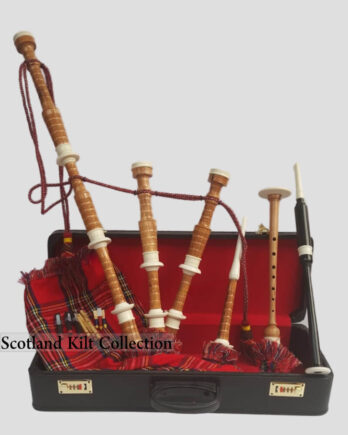 Royal Stewart Tartan Natural Finish Cocus Bagpipe Set
Royal Stewart Tartan Natural Finish Cocus Bagpipe Set -
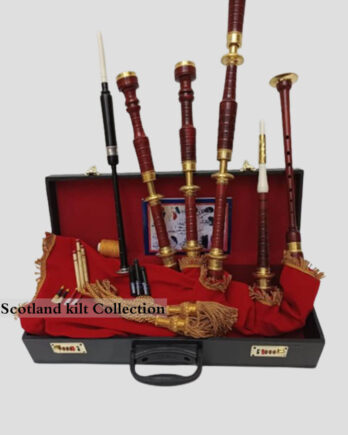 Highland New Red Velvet Gold Plated Bagpipe Set
Highland New Red Velvet Gold Plated Bagpipe Set -
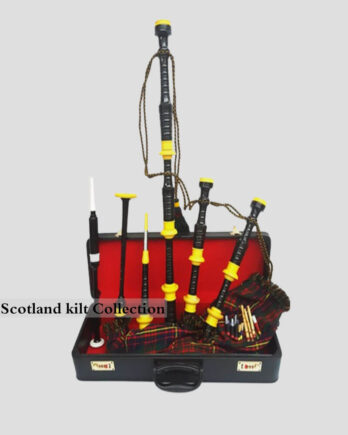 MacDonald Tartan Yellow Mounts Bagpipe Set
MacDonald Tartan Yellow Mounts Bagpipe Set -
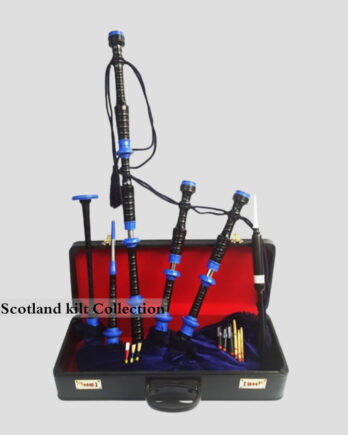 Highland Beautiful Blue Mounts Bagpipe Set
Highland Beautiful Blue Mounts Bagpipe Set -
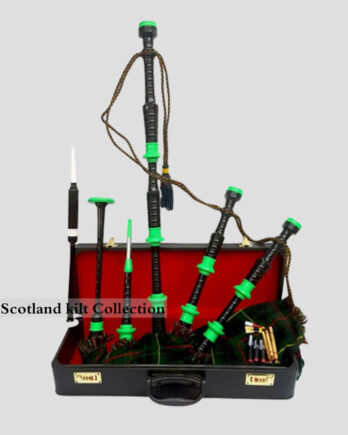 Hunting Stewart Tartan Green Mounts Bagpipe Set
Hunting Stewart Tartan Green Mounts Bagpipe Set -
 Royal Stewart Tartan Red Mounts Bagpipe Set
Royal Stewart Tartan Red Mounts Bagpipe Set -
 Pride Of Scotland Tartan Black Finish Bagpipe Set
Pride Of Scotland Tartan Black Finish Bagpipe Set -
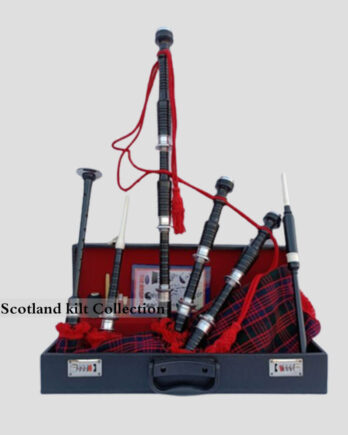 MacDonald Tartan Black Finish Bagpipe Set
MacDonald Tartan Black Finish Bagpipe Set -
 Scottish National Tartan With Black Finish Bagpipe Set
Scottish National Tartan With Black Finish Bagpipe Set -
 Gray Watch Tartan Black Finish Bagpipe Set
Gray Watch Tartan Black Finish Bagpipe Set -
 Mackenzie Tartan Black Finish Bagpipe Set
Mackenzie Tartan Black Finish Bagpipe Set -
 Buchanan Tartan Black Finish Bagpipe Set
Buchanan Tartan Black Finish Bagpipe Set -
 Pride Of Scotland Tartan Natural Finish Bagpipe Set
Pride Of Scotland Tartan Natural Finish Bagpipe Set -
 MacDonald Tartan Natural Finish Bagpipe Set
MacDonald Tartan Natural Finish Bagpipe Set -
 Bagpipe Set With Royal Stewart Tartan
Bagpipe Set With Royal Stewart Tartan -
 Irish National Tartan Natural Finish Bagpipe Set
Irish National Tartan Natural Finish Bagpipe Set -
 Scottish Highland Gold Plated Bagpipe Set
Scottish Highland Gold Plated Bagpipe Set -
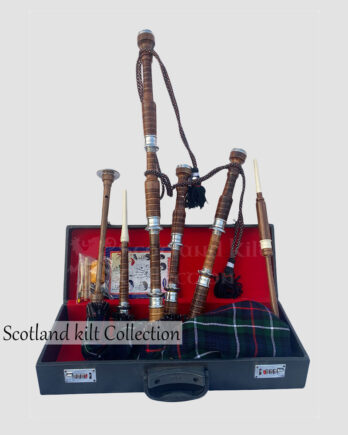 Mackenzie Tartan Bagpipe Set
Mackenzie Tartan Bagpipe Set -
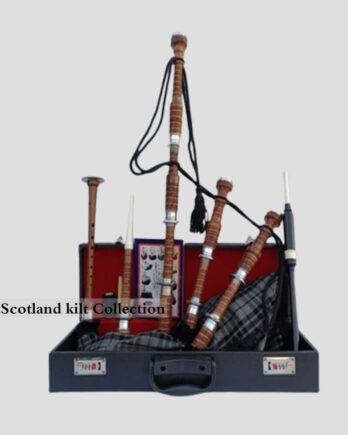 Gray Watch Tartan Bagpipe Natural Finish Set
Gray Watch Tartan Bagpipe Natural Finish Set -
 Bagpipes in Scottish National Tartan With Natural Finish
Bagpipes in Scottish National Tartan With Natural Finish
Frequently Asked Questions
Expect it to take about a year to develop foundational skills and be able to competently play some tunes. Achieving an intermediate level can take 1-2 years with regular practice. Becoming an advanced player may take 5+ years. Be patient and focus on gradual improvement.
Aim for 15-30 minutes of practice 3-5 times per week when starting. This allows you to develop at a steady pace without getting frustrated. Increase practice sessions to 30-60 minutes as you progress. Maintaining regular practice is key.
Getting used to the blowing technique and maintaining constant pressure on the bag can be challenging at first. Coordinating the drones, chanter and bag takes a lot of practice. Fingerwork patterns can also be difficult to master. Go slowly and be patient with yourself as you build these skills.
Private lessons are highly recommended when beginning bagpipes, especially for proper technique. Self-teaching makes it easy to pick up bad habits. An instructor can tailor the pace to your abilities and give valuable feedback. If lessons aren’t an option, join a piping community for guidance.
Focus on developing solid technique, control, and tone. Upgrade to higher-quality pipes when you have the skills to get the most from the instrument. Practice embellishments and work on musical expression. Listen to accomplished pipers. With time and practice, you can achieve an impressive sound.
Expect to change drone reeds every 4-12 weeks with regular playing. Oil the bag periodically to keep it airtight. Wax-tuning slides as needed. Periodically have an experienced piper check for leaks, cracks, or other repairs needed. Proper upkeep will keep your pipes sounding their best.




